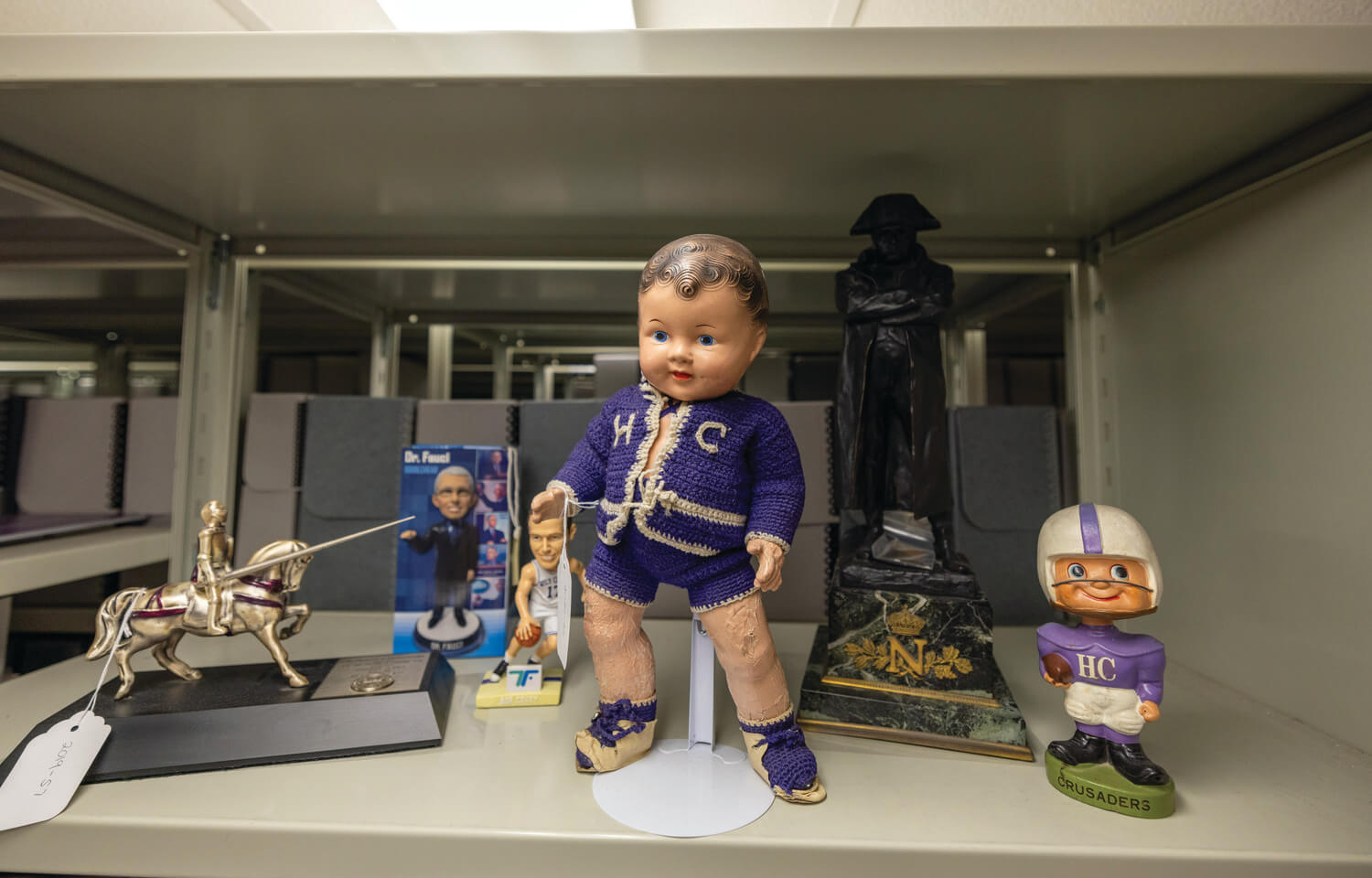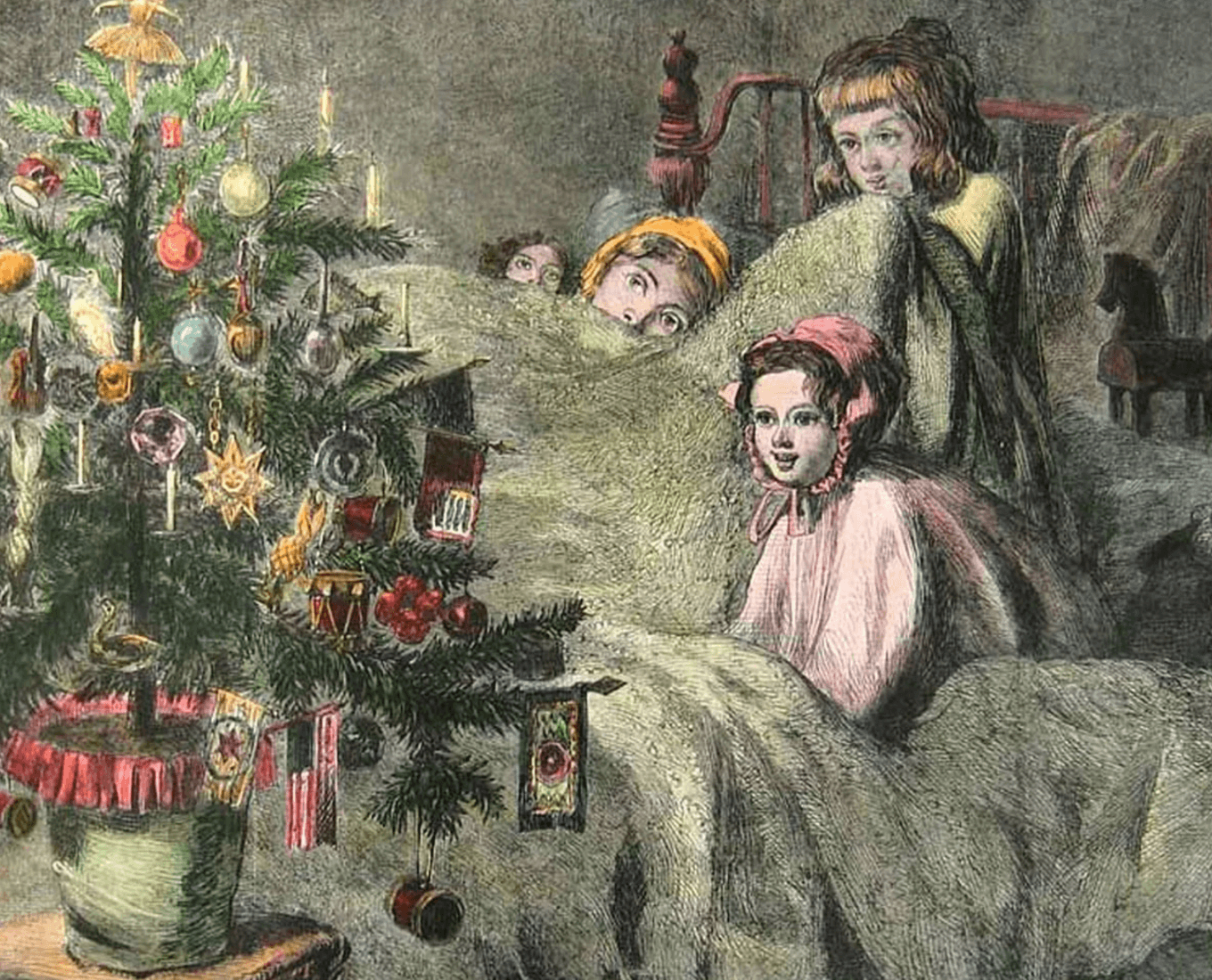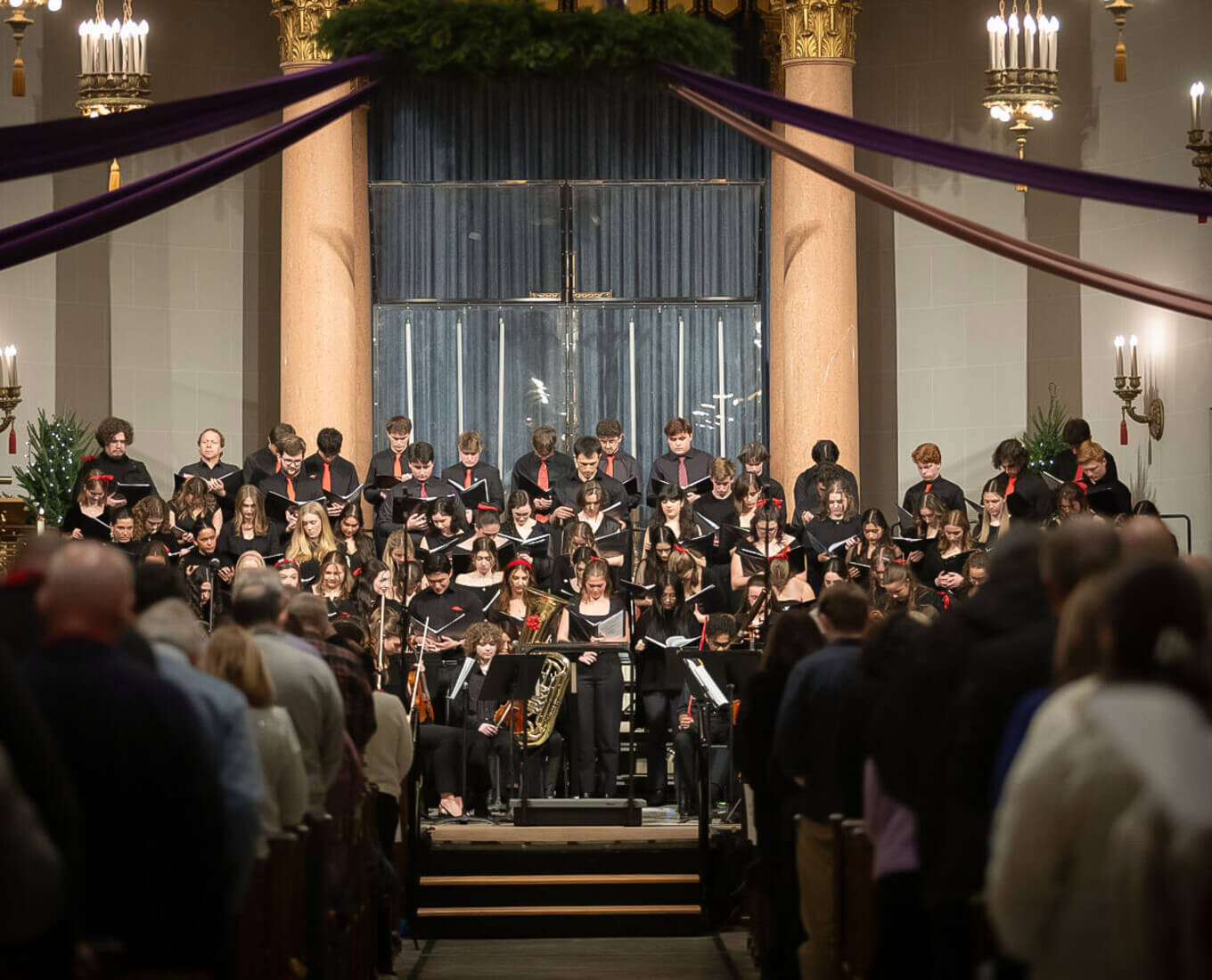Abby Stambach, head of Archives & Distinctive Collections at Holy Cross, heard a gasp. It was 2020, and her colleague sitting at the Archives front desk had just opened a cardboard box slightly larger than a shoe box.
Working in Archives, Stambach is used to the unexpected. All kinds of items find their way to the third floor of Dinand Library, from a munitions chest filled with a professor’s long-lost papers to, once, a half-eaten donut (a stowaway among other items). So when she heard the gasp, Stambach ran to get a peek.
Inside was a baby doll wearing a custom crocheted purple and white Holy Cross sweater, shorts with crisscrossed suspenders and matching socks. A rusty safety pin held together one of the worn leather shoes. The box came from the office of the Rev. Philip L. Boroughs, S.J., then-president of the College. He was cleaning out his office and some boxes were sent to Archives.
“We received it with no context,” Stambach says. “It was just a baby doll in a box from Fr. Boroughs.” The mystery of the situation is not unusual, though, she notes. Archives is home to many objects of unknown origins, and the staff often play detective.
Without much to go on, the baby doll stayed in limbo on the processing shelf and gradually became somewhat of a mascot to Archives staff and visitors. “He’s a big hit when we have students up here for tours,” Stambach says. “When people see him, it gets them talking.”
Sometimes displaying a piece for a while even helps information trickle in.
“I picked the doll for a ‘staff favorites’ display and Matt Prochilo, major gifts officer, came up — not related to this — and saw the exhibit,” Stambach says. “He ended up filling us in on part of the backstory. It turns out he had been at a Holy Cross football game when someone gave Fr. Boroughs the box.”
The gifter’s identity remains a mystery, however, the item still offers many clues. “You never know when a piece of knowledge is going to help you,” Stambach says.
The doll appears to date to the mid-20th century. But the sweater offers the best hint of when its maker crocheted the design. Sarah Campbell, archivist, found a Purple Patcher yearbook image showing a student wearing a similarly designed sweater in 1953. “Sarah happens to know a lot about crochet and knitting, and was even able to determine the style of crochet,” Stambach says.
Purple dye fades considerably faster than other color dyes when exposed to sunlight, so the yarn’s vibrant color also indicates the doll may have been in storage for a long time, she notes.
The doll falls under the broad category of Holy Cross memorabilia and ephemera and tells a story about a particular time, a person and the spirit and love they had for Holy Cross, Stambach says.
And the doll’s outfit was clearly lovingly made. Someone took the time to fit the tiny clothes perfectly to the doll’s dimensions, right down to the socks tucked snugly under the original leather shoes.
Given how much people love Holy Cross, that amount of care makes sense, Stambach says.
Do you recognize this doll or have any clues you can lend to its history or former owner? Email hcmag@holycross.edu.



